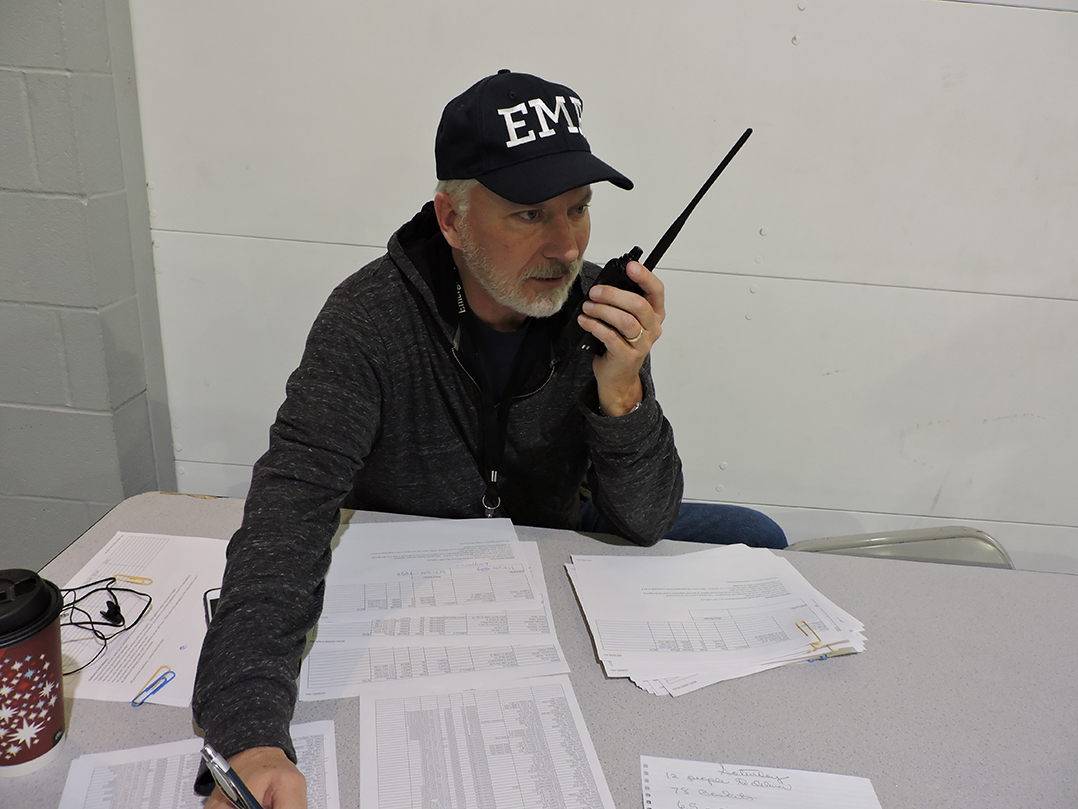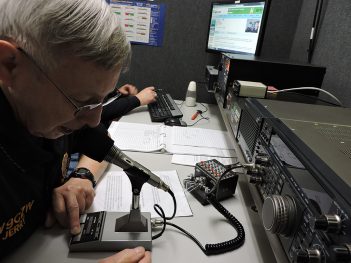
By Rick Morwick
Amateur radio operators have any number of reasons for tuning into the hobby. But they all have one thing in common.
In emergency situations, they can — and do — provide a life-saving service.
“Radio amateurs enjoy radio technology as a hobby. That’s the fun part. But it’s also a service — a vital service that has saved lives again and again when regular communications systems failed,” said Joe March, public information officer for the Indiana Chapter of the American Radio Relay League. “Most of the time, however, it’s the most fun you can have with a radio.
“It’s a way to talk with people around the world.”

But to do so, amateur operators — commonly known as ‘hams’ — must be properly licensed.
On Feb. 17, the Central Indiana Amateur Radio Association will offer a free, one-day class at St. Vincent Carmel Hospital for anyone interested in obtaining a federal entry-level amateur license. The day-long class will be followed by a 35-question, multiple choice test.
Class is from 8 a.m. to 4:30 p.m. in conference room B at the hospital, 13500 N. Meridian St. Exams will be administered immediately after class. The class will review information from the Radio License Manual.
“Before anyone can get on the air, they need to be licensed and know the rules to operate legally,” March said. “Amateur radio is as old as radio itself and has been a licensed service for nearly a century, offering a pool of self-trained experts able to provide emergency backup communications.”
More than 3 million licensed amateurs operate radios worldwide, including 747,536 in the U.S. and 15,182 in Indiana, according to the CIARA. In Hamilton County, amateur radio operators serve with both the Radio Amateur Civil Emergency Services, under the auspices of the Hamilton County Emergency Management Agency, and the Amateur Radio Emergency Service, led by a county emergency coordinator.
“These hams are frequently found throughout the county in their mobile units reporting ‘ground truth’ by radio, direct to the Emergency Operations Center in Noblesville and the National Weather Service during severe weather,” March said. “On numerous occasions, county warning sirens have sounded when one of them observed a tornado at or near touchdown.”
The CIARA-sponsored class at St. Vincent is open to the public. A number of medical hospital personnel have enrolled to prepare for Emergency Medical Associates needs. Space is limited. For more information or to reserve a spot, contact instructor Mike Alley at [email protected] or contact March at 317-224-9433 or at [email protected].
“Although hams get involved in the hobby for many reasons, they all have in common knowledge of today’s wireless technologies, regulations and operating principles,” March said. “At the scene or the aftermath of a tornado, a ham may call for help by using a pocket-sized, hand-held radio where cellphone towers and power lines were knocked out of service.
“Across the country, skilled hams act as emergency communicators to render aid, whether it’s during fires, floods, earthquakes or a tornado. But most of the time, hams do what they do because it’s just plain fun.”




